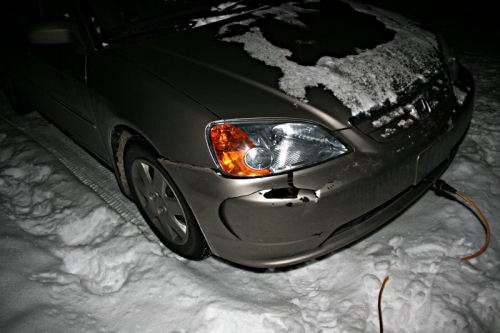Wow… if you don’t think vaccinations will be a major item on your travel budget, think again. For an around the world trip, required and recommended vaccinations are pricey and many. We’ve decided to get all of the recommended shots. Maybe it’s because of all the scary things that these diseases can do to you or maybe (more likely) it’s because our current health insurance through work covers most of the cost.
The information provided in this blog post is specific to our trip, and is based on advice we received from our local travel clinic. If you are seeking advice for your own trip, please seek out your local travel clinic or do some online research. The Centers for Disease Control Website seems to have very good information http://www.cdc.gov/.
Here are the vaccinations that we already have and will receive before our trip, with a cost breakdown for each one. Note: We chose to get our shots from the local travel clinic. The travel clinic is more expensive than going through your doctor and a pharmacy, but along with the price comse convenience and quality advice:
Shots We Already Have:
Measles & Rubella – childhood immunizations, lasts lifetime
Hepatitis B – we were both immunized in school, lasts lifetime
Tetanus/Diphtheria – last booster was in June, 2010 before our Yukon River trip, good for 10 years
Shots We Need:
GRAND TOTAL: $2015/person (before insurance)
Hepatitis A
Cost: $80 x 2 = $160
When to Get It: At least 6 months before trip for the first shot, a booster needs to be given 6-12 months after the initial dose.
Duration: 20 years
Why We Need It: Hepatitis A & B shots are recommended for all travelers. It can be spread through contaminated food, water, and from person to person contact.
Yellow Fever
Cost: $155
When to Get It: At least 10 days before trip. Also, it needs to be taken at the same time as other live vaccines or at least 28 days apart.
Duration: 10 years, beginning 10 days after vaccination
Why We Need It: As far as we know, Yellow Fever is the only vaccination that is required for an entry visa into the countries we will be travelling to. It is required when you are travelling from a country with Yellow Fever risk to another country with the potential for Yellow Fever. An International Certificate of Vaccination for Yellow Fever is required to travel to countries like Bolivia. It is spread through the bite of an infected Aedes Aegypti mosquito which live in parts of Africa, Central America, and South America.
Typhoid
Cost: $80
When to Get It: Any time before trip
Duration: 3 years (injection) or 7 years (oral)
Why We Need It: All the person at the travel clinic told us was don’t travel without it. Apparently the oral vaccination lasts for 7 years (versus the 3 year duration of the injection), but the costs are the same.
Polio
Cost: $95
When to Get It: Any time before trip
Duration: Lifetime
Why We Need It: Polio is a devastating disease. Although we received polio vaccinations along with our baby vaccinations, they are finding that a booster is needed. This vaccination is recommended for travelers going to parts of Africa and India.
Mumps
Cost: $85
When to Get It: Not sure exactly, but because it’s a live vaccine you won’t be protected immediately. Also, you need to plan to take live vaccines at the same time or over 28 days apart.
Duration: lifetime
Why We Need It: Most babies are immunized for measles, mumps and rubella and are later given a booster for measles and rubella. They are now finding that the antibodies for the mumps wane and a booster is required. The mumps isn’t one of the worst illnesses to get, but can cause sterility if you get it in your childbearing years.
Japanese Encephalitis
Cost: $265 x 2 = $530
When to Get It: At least 5 weeks before traveling to Southeast Asia. 2 shots are required, 28 days apart. The second dose should be given one week before travel.
Duration: 3 years
Why We Need It: Japanese Encephalitis is a virus transmitted by mosquitoes in most parts of Asia. Although most people infected with it won’t show symptoms, 10-25% of people with symptoms will die and 50% will have permanent neurological damage. Not something we want to mess with!
Rabies (Pre-Exposure Series)
Cost: $245 x 3 = $735
When to Get It: About a month before the trip (3 shots required at 0, 7, and 21 days)
Duration: Lifetime
Why We Need It: If this wasn’t covered by our insurance, we would probably take our chances without it. Having said that, rabies is serious business. If it gets to your brain stem you are basically dead. Getting this pre-exposure series does not fully protect us against rabies. If we didn’t have it, we would need to get blood product (Rabies Immune Globin) immediately and 5 shots within 28 days of potential exposure. With it, we would need 2 doses of rabies vaccine within 3 days of potential exposure. So for $735 we would save ourselves the blood product and 3 shots. This could be the difference between being evacuated home after being scratched by a monkey and continuing our trip (because not every country will have the blood product readily available). Then again, it may not matter as many of the countries without blood product are also without rabies vaccine.
Meningitis (Group A, C, Y, W-135)
Cost: $175
When to Get It: A few weeks before traveling to Africa (protection can take a few weeks to develop)
Duration: 3-5 years
Why We Need It: This is another nasty brain disease. It is recommended for travel in Africa, particularly in what is deemed the “meningitis belt” – a band across the center of Africa from Senegal to Ethiopia. It is spread by person-to-person contact, so it is more highly recommended if you are young, single, volunteering in schools, etc. Like rabies, we are choosing to get this vaccine mostly because our insurance covers it.
Whooping Cough
Cost: about $70
When to Get It: Any time before trip (I think)
Malaria
There is no vaccination for malaria, but if you know where you’re going you can pre-plan when to take anti-malarial oral medication. There are weekly anti-malarial pills and daily ones (which cost 66 cents each). The daily ones need to be taken two days before entering a region with malaria, the duration of your visit, and for 28 days after. We’re not sure exactly what our travel path is yet, so it is difficult to make a plan for the anti-malarial pills we will need. We’ve heard from a few sources that it will be cheaper to buy them when we get to our destination, rather than stock up in Canada.





